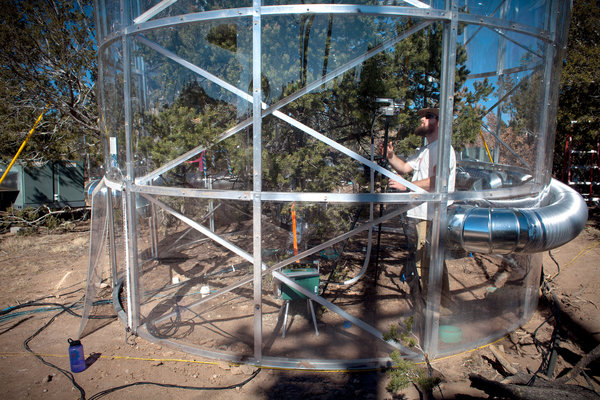

| Visitors Now: | |
| Total Visits: | |
| Total Stories: |

| Story Views | |
| Now: | |
| Last Hour: | |
| Last 24 Hours: | |
| Total: | |
As forests disappear, examining the mechanisms of their death
By SANDRA BLAKESLEE
24 December 2012
LOS ALAMOS, New Mexico (The New York Times) — Everywhere, trees are dying.The boreal forests of Canada and Russia are being devoured by beetles. Drought-tolerant pines are disappearing in Greece. In North Africa, Atlas cedars are shriveling. Wet and dry tropical forests in Asia are collapsing. Australian eucalyptus forests are burning. The Amazon basin has just been hit by two severe droughts. And it’s predicted that trees in the American Southwest may be gone by the end of this century.
But as this astonishing transformation of landscapes continues, scientists have a confession to make: They do not fully understand how trees die. Certainly warmer temperatures, lack of water and insects play a role. But in each region hit by heat, drought or bugs, some trees remain standing.
Why do some trees die while others survive? What happens deep inside a tree under stress? How slowly or quickly do different species die?
Nate McDowell, a staff scientist at the Los Alamos National Laboratory in New Mexico, aims to find answers. Like a doctor trying to learn why his patient is sinking into a coma, Dr. McDowell, a plant physiologist, has set up a kind of intensive care unit for trees to find out precisely how they die, though unlike his physician counterparts, Dr. McDowell is nudging his patients toward an early death.
By speeding up aspects of climate change — more heat, less water — he hopes to document every spike in their coffin. And then do an autopsy.
The experiment is badly needed, said Craig Allen, a leading expert on forest ecology for the United States Geological Survey who is not involved in the research.
“Without better understanding the mechanisms of tree death, it is not possible to reliably predict when and where the next massive die-offs will occur on this planet,” he said.
There are two competing theories explaining tree death, Dr. McDowell said. They die of thirst. Or they starve to death. But exactly how these processes occur, and how they relate, remains to be shown with scientific rigor. […]
As Forests Disappear, Examining the Mechanisms of Their Death
2012-12-27 11:45:52
Source: http://www.desdemonadespair.net/2012/12/as-forests-disappear-examining.html
Source:



